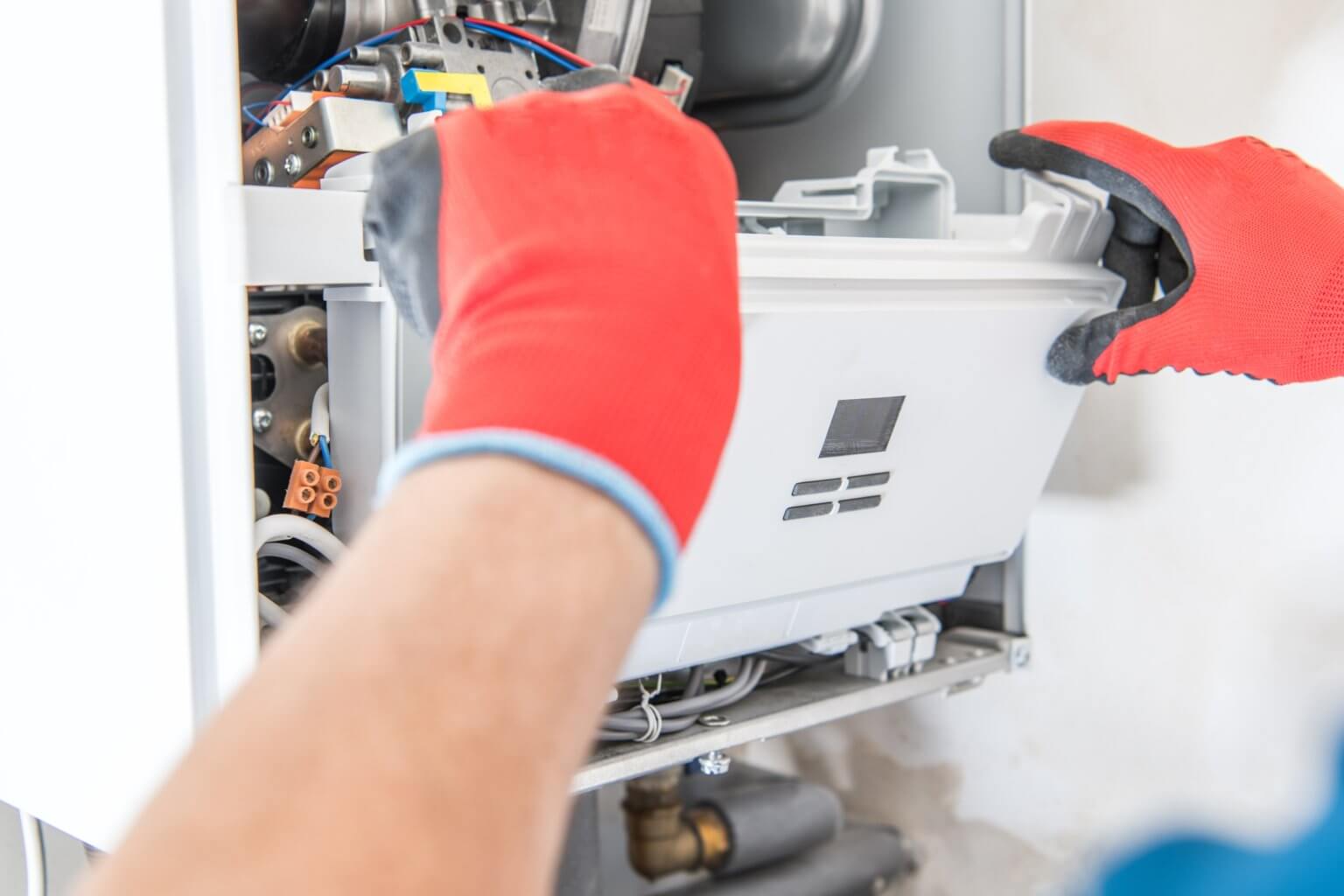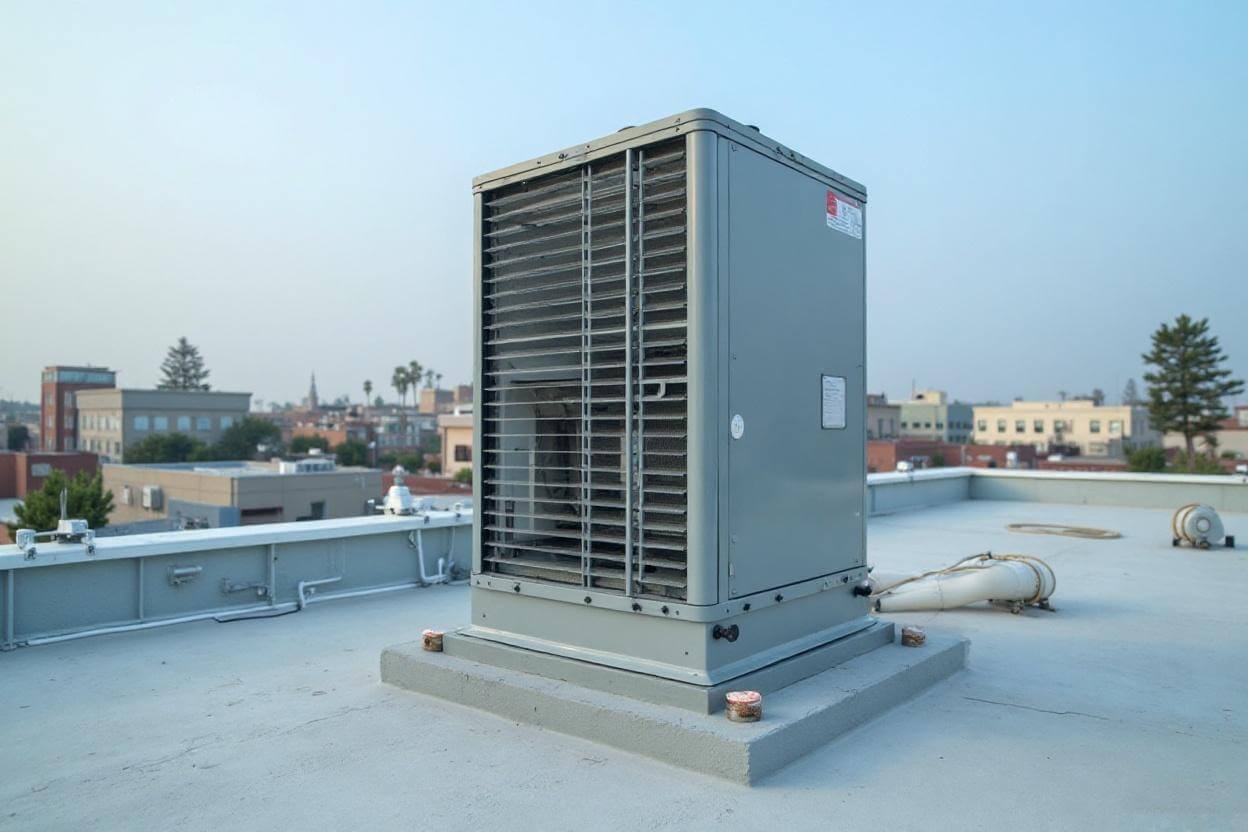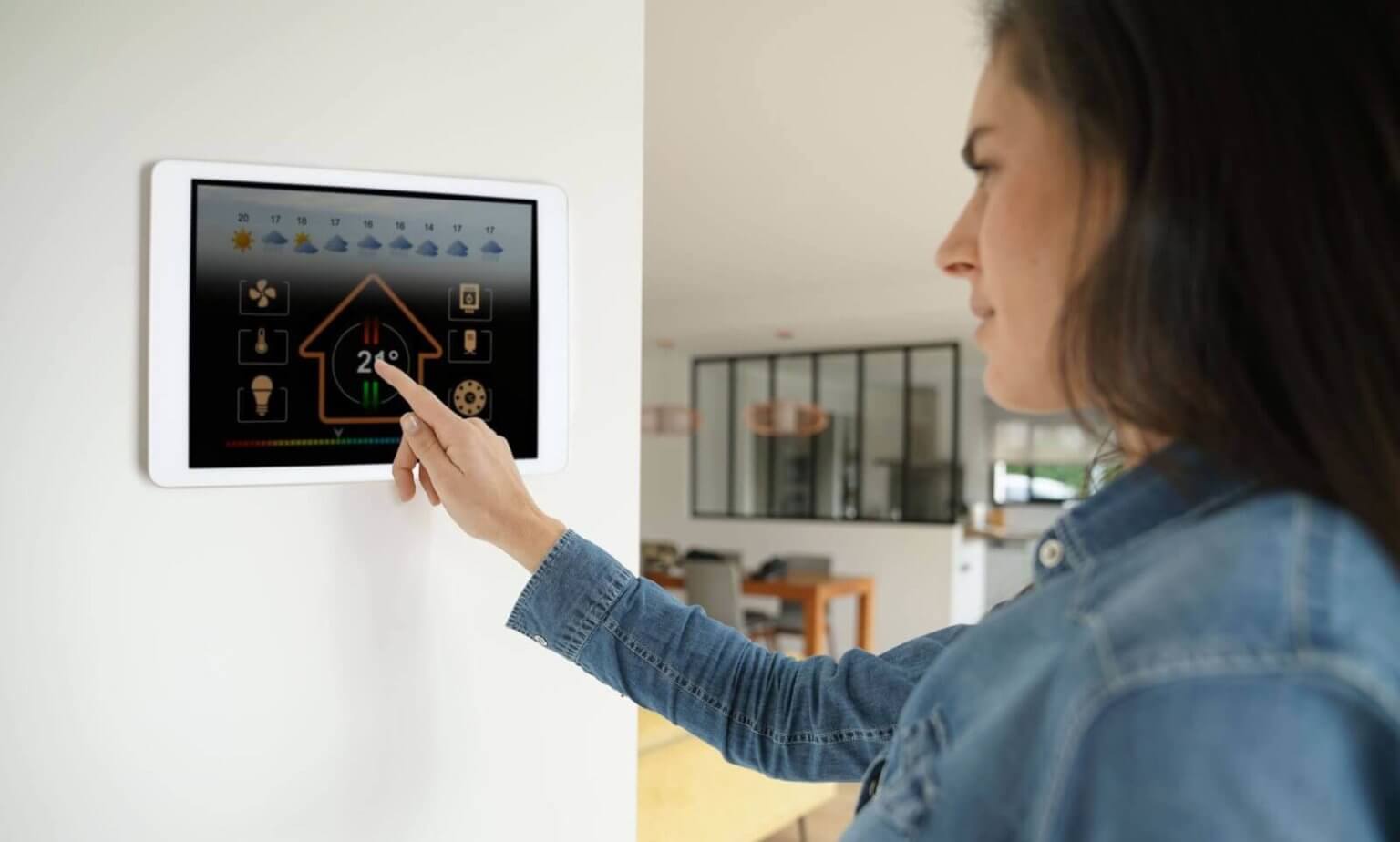Homeowners in Canoga Park ask this all the time: can an existing HVAC setup be upgraded, or does it have to be replaced? The honest answer depends on the age of the equipment, the condition of the ductwork, and the comfort and energy goals for the house. In many cases, the right upgrades deliver quieter operation, lower bills, and better air without swapping every component. Season Control Heating & Air Conditioning provides HVAC upgrade services across Canoga Park and nearby neighborhoods like West Hills, Winnetka, Chatsworth, and Reseda. The team helps homeowners decide what to improve now and what to plan for in the next 3 to 5 years.
This article breaks down what counts as an HVAC upgrade, how to size the opportunities, and where upgrades make the biggest difference in Los Angeles Valley homes. It leans on local field experience, including common issues in post-war ranch homes, 1970s additions, and newer infill construction near Sherman Way and Topanga Canyon Boulevard.
What counts as an HVAC upgrade?
An upgrade improves performance, efficiency, comfort, or air quality without a full system replacement. That might mean adding a variable-speed blower to an existing furnace, replacing an aging condenser with a high-SEER heat pump, sealing and insulating ducts, or installing smart controls to manage humidity and zoning. In Canoga Park, typical upgrades include:
- High-efficiency heat pump or air conditioner replacement while keeping compatible indoor components ECM (electronically commutated) blower motor retrofit for quieter, more efficient airflow Duct sealing and right-sizing for better airflow to the far bedrooms Smart thermostat with zoning or sensors for even temperatures across rooms Indoor air quality add-ons such as media filters, UV lights, and dedicated ventilation
Upgrades can be staged. Many homeowners start with the outdoor unit and thermostat, then tackle duct work or zoning in a later phase.
How to tell if an upgrade makes sense
In the San Fernando Valley, summer heat stresses weak systems. If the house struggles to get below 78 degrees by late afternoon on a 95-degree day, something is off. That problem might be poor airflow, leaky ducts, an undersized system, or a worn compressor. A few practical checks give clarity:
First, note the system age. A gas furnace over 18 to 20 years old or an AC/heat pump over 12 to 15 years old usually favors replacement. Parts get scarce, efficiency lags, and refrigerant type matters. Many pre-2010 systems use R‑22, which is no longer produced. Servicing those units costs more and returns less.
Second, look for uneven rooms. A comfortable living room paired with hot back bedrooms suggests duct issues or airflow misbalance. Upgrading the ducts, adding balancing dampers, or adding a zoning panel can fix this without tearing out the whole system.
Third, watch the power bill. If summer electricity costs jump year over year with the same usage pattern, the compressor and blower may be working longer due to low capacity or duct losses. In older Canoga Park homes with flex duct runs over 40 feet and multiple sharp bends, sealing and smoothing the runs can cut runtime by 10 to 25 percent.
Fourth, listen. A constant high-pitched whine from the blower or a harsh rattle from the condenser points to worn motors, loose panels, or fan imbalance. A variable-speed retrofit often reduces noise and improves efficiency.
A qualified evaluation anchors the decision. Season Control’s techs measure static pressure, supply and return temperatures, duct leakage, and equipment amperage. They also check the home’s envelope: attic insulation depth, attic temperature, and obvious air leaks. Good upgrade plans start with data, not guesswork.
Common upgrade paths for Canoga Park homes
Every house is different, but several patterns repeat across the neighborhood’s housing stock.
Older ranch homes near Roscoe Boulevard and De Soto Avenue often have undersized return air ducts and minimal attic insulation. Upgrades here tend to focus on adding a larger return, sealing the supply trunks, and installing a variable-speed blower. The result is quieter airflow and a noticeable drop in hot-spot rooms.
Two-story homes built in the 1970s and 80s commonly suffer from a hot second floor. Zoning or a dedicated mini-split for the upper level solves this. Some owners choose a dual-fuel setup: a heat pump handles mild winter days, while the gas furnace covers cold snaps. This works well for Valley winters, where overnight lows sit in the 40s.
Newer infill properties near Owensmouth Avenue often have decent ducts but basic single-stage equipment and builder-grade thermostats. Swapping to a high-SEER2 heat pump and a learning thermostat can cut summer consumption noticeably while keeping the interior more stable during late afternoon heat.
Accessory HVAC upgrades & retrofits dwelling units, now common in backyards across Canoga Park, benefit from ductless mini-split upgrades. A 9,000 to 12,000 BTU wall unit with a high HSPF2 rating keeps a studio comfortable without tapping the main house’s duct system. Quiet operation is a plus when the ADU borders a bedroom.
AC, heat pump, or full system: choosing the right upgrade
Homeowners often ask whether to stick with a conventional air conditioner or move to a heat pump. The Valley climate favors heat pumps thanks to mild winters and long cooling seasons. Modern inverter heat pumps deliver efficient cooling and heat without the abrupt on-off cycles of old single-stage units. If the existing gas furnace is relatively new and in good shape, a hybrid plan works: install a heat pump outside, keep the furnace as backup, and let the smart thermostat choose the most efficient heat source based on outdoor temperature.

A full system replacement makes sense when both the indoor and outdoor units are past midlife, the coil is leaking, or the duct system is a known problem. Mismatched equipment can work, but the best efficiency and control come from matched systems. If the goal is 16 to 20 SEER2 performance, pair an inverter outdoor unit with a variable-speed indoor blower and a compatible coil. Season Control’s HVAC upgrade services often include coil replacement even when the furnace stays, to ensure the refrigerant circuit and coil sizing align with the new outdoor unit.
Ductwork: the hidden upgrade with big payoff
Ducts are the silent efficiency killer in many Canoga Park homes. Long runs across hot attics, loose connections at plenums, and kinks in flexible ducts rob airflow and capacity. Measurements tell the story. If total external static pressure exceeds manufacturer specifications, the blower uses more energy and the coil can freeze in peak heat.
Upgrading ducts can be as simple as sealing joints with mastic, adding rigid elbows where flex kinks, and insulating bare metal trunks. In homes with 1-inch filter grilles that whistle, upsizing to 2-inch media cabinets reduces restriction and protects the coil from buildup. Expect fewer dust issues and quieter operation.
Anecdote from the field: a 1,600-square-foot home near Gault Street had rooms that would not drop below 79 degrees after 4 pm. The 3‑ton condenser checked out, but static pressure was high and the return was undersized. The upgrade added a second return in the hallway, sealed four major leaks at the plenum, and swapped the blower motor to ECM. The homeowner reported 75 degrees by 5 pm during a 96-degree day and a 18 percent decrease on the following LADWP bill.
Controls and zoning: smarter airflow, better comfort
Control upgrades rarely get the spotlight, yet they often deliver immediate comfort gains. A smart thermostat that reads multiple room sensors can balance temperatures without manual fiddling. Zoning adds motorized dampers to split the home into two or more areas, each with its own temperature target. For two-story homes in Canoga Park, a simple two-zone system often pays back in comfort and runtime reduction.
Humidity is less intense than coastal LA, but summer monsoon bursts and spring shoulder seasons still create discomfort. Equipment that allows dehumidification control, combined with a thermostat that manages blower speed during cooling, improves indoor feel even at 76 degrees. That means fewer calls to nudge the setpoint down and less energy use.
Filtration and air quality upgrades that matter
Dust, pet dander, and wildfire smoke create air quality concerns across the Valley. Upgrading to a media filter with MERV 11 to 13 increases capture without choking airflow when the system is sized correctly. Pairing a high-MERV filter with a variable-speed blower maintains steady, low-noise circulation that keeps the air cleaner throughout the day.
UV lights and advanced air cleaners can help with biological growth on the coil and odors, though they should supplement, not replace, proper filtration and duct sealing. For households with asthma or allergies, a dedicated fresh air ventilator with heat recovery can bring in filtered outdoor air without significant load on the system. That is especially useful when outside smoke or smog spikes.


The SEER2 shift and what it means in Los Angeles County
SEER2 and HSPF2 are the newer efficiency metrics. They reflect more realistic testing conditions compared with older SEER/HSPF ratings. In practice, a 15.2 SEER2 unit will often outperform a 16 SEER legacy unit under the same roof due to improved part-load control and better airflow pairing.
Local code also matters. Los Angeles County permits for HVAC changeouts look at equipment efficiency, refrigerant management, duct leakage limits, and thermostat requirements. Season Control takes care of permits and HERS testing where required, which streamlines the upgrade path and protects resale value. Homeowners avoid surprises during appraisals or home inspections.
Heat pumps and gas: running the numbers
Natural gas prices and electricity rates in the Valley shift. Heat pumps reduce gas usage in winter, which can be appealing for families trying to lower their dependence on gas. The economics hinge on hours of operation and insulation levels. In a typical 1,800-square-foot Canoga Park home with R-30 attic insulation and decent windows, a modern heat pump can carry winter heating with low electrical draw most days. On the few colder nights, dual-fuel control can hand off to gas to maintain comfortable supply air temperatures without heavy electric resistance heat.
Many homeowners worry about heat pump warmth. Older units delivered lukewarm air in heat mode. Inverter-driven systems feel different. They run longer at lower speed, maintaining stable indoor temperatures. Supply air is warmer than older single-stage heat pumps, and the constant circulation means fewer cold spots. For those used to the toasty blast from a gas furnace, dual-fuel keeps that familiar feel on the rare cold mornings.
Practical timeline and disruption
A straightforward outdoor unit upgrade plus thermostat usually takes a single day. Adding a new coil, modifying the furnace cabinet, or upgrading the blower may extend work into a second day. Duct sealing can be done the same day in many cases, though full duct replacements or added returns may run two to three days depending on attic access and complexity.
Season Control schedules around peak heat wherever possible, sets up portable cooling as needed, and keeps walkways clear to manage dust. Technicians photograph before-and-after duct connections and provide static pressure and temperature split readings upon completion. That data proves the improvement, and it helps track system health over time.
Maintenance matters after the upgrade
Upgrades deliver their value when the system stays clean and tuned. Airflow is the cornerstone. Filters should be changed on schedule. Media filters run 6 to 12 months depending on dust and pets. Basic 1-inch filters may need monthly changes in summer. Coils need inspection every year, especially in homes near busy streets like Sherman Way where fine dust accumulates quickly. Clearing the outdoor coil fins improves performance on hot days.
Thermostat settings should match the new equipment’s capabilities. For example, dehumidification settings often need a slight tweak, and staging or compressor speed ramps should match the system’s configuration. Season Control sets up the thermostat during commissioning and shows homeowners which settings are safe to adjust.
Rebates and financing in the Valley
Utility and state programs change, but rebates for high-efficiency heat pumps and duct sealing often apply in Los Angeles County. Savings vary by equipment type and efficiency tier. Many homeowners qualify for a few hundred to a few thousand dollars in incentives when moving to heat pumps or improving duct tightness. Season Control tracks active programs and helps clients file paperwork, which reduces out-of-pocket costs and speeds payback.
Financing can spread the investment over time. Given the energy savings of efficient equipment, the monthly utility reduction sometimes offsets a portion of the payment. For homeowners planning to sell in a few years, upgraded HVAC can help listings stand out in a competitive Canoga Park market, especially for buyers sensitive to energy costs.
What a thorough upgrade evaluation looks like
A proper assessment goes beyond nameplate ratings. Expect a technician to:
- Measure static pressure and temperature split, and check airflow against manufacturer targets Inspect ductwork for leaks, crushed runs, and insufficient returns Verify refrigerant circuit health and look for oil stains near fittings Check furnace or air handler condition, blower motor type, and filter fit Review home insulation levels, attic ventilation, and sun exposure by room
Those five steps form a reliable foundation for any HVAC upgrade plan. The result is a prioritized scope with clear pricing and options, not a single take-it-or-leave-it proposal.
Realistic outcomes and trade-offs
Upgrading an outdoor unit while keeping an old indoor coil can limit performance and warranty coverage. It can be a short-term strategy for budget reasons, but plan to replace the coil within a couple of years. Adding a high-MERV filter without correcting return sizing can cause noise and reduce airflow. Good installers verify static pressure after any filtration change.
Duct sealing brings strong gains in many Canoga Park homes, but it will not fix undersized equipment or severe design flaws. Zoning improves comfort, yet it adds control complexity and more components that need maintenance. Homeowners should weigh the benefits with the added control points, especially if rental use or frequent Airbnb turnover is part of the plan.
Why homeowners in Canoga Park choose a heat pump upgrade now
Three reasons come up most often in local consultations. First, the Valley heat keeps getting longer each year, and higher-efficiency systems hold setpoint during late afternoon peaks without constant cycling. Second, homeowners want quieter operation. Variable-speed compressors and blowers make a big difference in open floor plans. Third, utility rates reward efficiency and off-peak strategies. With a smart thermostat, pre-cooling before the hottest hours and coasting through late afternoon maintains comfort and trims costs.
A family off Lanark Street recently replaced a 12-year-old 3‑ton AC with a 3‑ton inverter heat pump, kept the furnace as backup, and added a return in the main hallway. They reported more even temperatures across the house, much quieter evenings, and a noticeable drop in their summer bill measured against similar weather days.
How Season Control approaches HVAC upgrade services
The company starts with a clear scope: current performance, owner goals, and budget range. They model a few upgrade paths and price them plainly. Clients often pick a staged plan: controls and duct sealing now, heat pump changeout early next spring before the rush, and zoning later if needed. Installers are trained to protect attic insulation during duct work, seal every connection with mastic, and verify results with measurements, not just a comfort test.
Because the team works daily in Canoga Park, they know common roof and attic layouts, permit expectations, and LADWP inspection requirements. That local experience saves time and helps avoid callbacks.
Ready for an upgrade? What to do next
If a system struggles on hot afternoons, makes unusual noise, or leaves rooms uneven, it is time for a check. A no-pressure evaluation puts real numbers to the decision and reveals the smartest path forward. Upgrades can be surgical or comprehensive, and the right plan should fit the home and the budget.
Season Control Heating & Air Conditioning serves Canoga Park, West Hills, Winnetka, Chatsworth, and nearby Valley neighborhoods. Ask for an HVAC upgrade services visit that includes airflow and duct testing, equipment health check, and a written proposal with clear options. Call the office or book online to secure a visit before the next heatwave.
Season Control Heating & Air Conditioning provides HVAC services in Canoga Park, CA. Our team installs, repairs, and maintains heating and cooling systems for residential and commercial clients. We handle AC installation, furnace repair, and regular system tune-ups to keep your home or business comfortable. We also offer air quality solutions and 24/7 emergency service. As a certified Lennox distributor, we provide trusted products along with free system replacement estimates, repair discounts, and priority scheduling. With more than 20 years of local experience and hundreds of five-star reviews, Season Control Heating & Air Conditioning is dedicated to reliable service across Los Angeles.
Season Control Heating & Air Conditioning
7239 Canoga Ave
Canoga Park,
CA
91303,
USA
Phone: (818) 275-8487
Website: https://seasoncontrolhvac.com/hvac-retrofits-upgrades-la-ca/